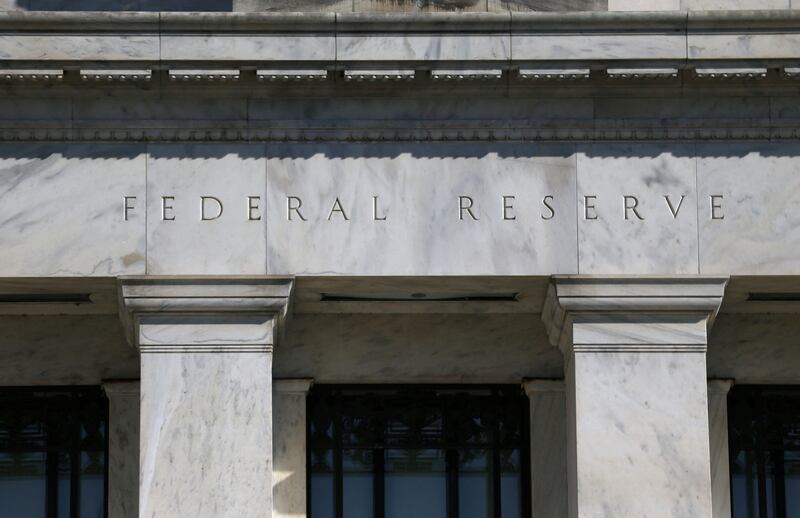Federal Reserve officials are reinforcing expectations they will raise interest rates by a half percentage-point next month, hastening a hawkish pivot to curb the hottest inflation in four decades.
“I think that is a reasonable option for us because the federal funds rate is very low,” New York Fed president John Williams told Bloomberg. “We do need to move policy back to more neutral levels.”
His remarks helped to fan a sharp rise in 10-year Treasury yields to 2.8 per cent, from about 2.7 per cent before the interview.
The New York Fed chief’s comments are the latest to underline US central bank’s plans to lift rates back to levels that prevailed before the pandemic, or even higher.
In addition to the quarter-point move they made last month, that implies about 200 basis points of tightening over the course of the remaining six Fed meetings this year to push rates to about 2.5 per cent.
That message has been clearly heard by investors. Interest-rate futures are almost fully priced for a half-point increase at the Fed’s meeting from May 3 to May 4, when officials could also announce a start date for beginning to shrink their almost $9 trillion balance sheet.

Mr Williams voiced confidence in the Fed’s ability to soft-land the economy — cool price pressures without forcing a steep rise in unemployment — and said the Fed’s forward-guidance communications around its policy plans have already set the ball in motion.
“We have seen a dramatic, significant movement in yields and financial conditions over the past several months and that is already positioning policy well to get supply and demand back into balance,” he said.
US consumer prices rose 8.5 per cent in March from a year earlier, marking the biggest increase since 1981.
The war in Ukraine has raised food and energy costs, pushing headline inflation further away from the Fed’s 2 per cent target.
US central bankers, by their own admission, were slow to react and are now viewed as moving with determination to catch up.
“Generous fiscal policies, supply-chain disruptions, and accommodative monetary policy have pushed inflation far higher than I — and my colleagues on the FOMC [Federal Open Market Committee] — are comfortable with,” Philadelphia Fed Bank president Patrick Harker said in remarks at Rider University.
Mr Harker said he is worried about inflation expectations becoming “unmoored”.
But the consensus among policymakers starts to fray over how much further above what they judge to be a “neutral” level for interest rates they will need to go, if at all.
Fed doves argue they do not have to commit to doing more than ensuring rates are neutral until they have seen how the economy responds to the tightening that has already been anticipated in financial markets.
They also point to balance-sheet roll-off as another factor cooling the economy. Minutes of their March meeting showed officials backing a plan to shrink it by $95 billion a month.
In a question-and-answer session after his speech, Mr Harker said the balance sheet will run off “methodically” and the process will start “soon.”
Fed governor Lael Brainard, who is awaiting Senate confirmation to become vice chairman of the central bank, said the combination of higher rates and a smaller balance sheet will lower inflation to 2 per cent over time.
She also cited shifts in market expectations as evidence that the Fed’s forward guidance has already tightened financial conditions.
“In terms of exactly what [is] the right pace of that set of increases in the policy rate from meeting to meeting, I don’t really want to focus on that,” she said on Tuesday.
“By moving expeditiously to a more neutral posture, it provides the committee with optionality in either direction,” she said, introducing an element of two-way risk to rates in case the economy starts to stutter.
Some economists have voiced concern that the Fed will tip the economy into recession by jacking rates up too high.
“It is now clear they will hike by 50 basis points in May,” said Thomas Costerg, senior US economist at Pictet Wealth Management. “The risk of policy mistakes is rising since it is not clear at all the economy can digest several hikes of 50 basis points.”
But hawks such as James Bullard of St Louis want to ensure rates are above 3 per cent this year and call it wishful thinking to suggest inflation will subside without stepping hard on the policy brake.
Fed governor Christopher Waller, who was previously Mr Bullard’s head of research in St Louis before joining the Fed board in Washington in 2020, said the economy could handle half-point increases in May and possibly June and July as well.
“I don’t see any value in trying to shock the markets; we are not in a Volcker kind of moment,” he told CNBC on Wednesday. “We will do what it takes to get inflation back down, but we can do that in an orderly way without causing a lot of financial market stress.”
Cleveland Fed President Loretta Mester, during an event organised by the University of Akron on Thursday, also expressed confidence that the central bank can manage to tame inflation without derailing the economy.
“Our intent is to reduce accommodation at the pace necessary to bring demand into better balance with constrained supply in order to get inflation under control while sustaining the expansion in economic activity and healthy labour markets,” Ms Mester said.






